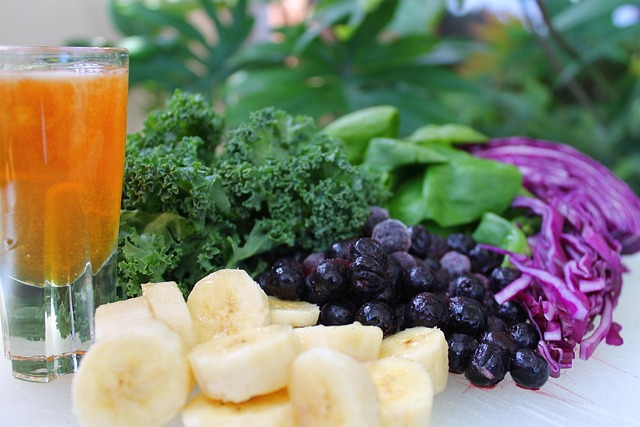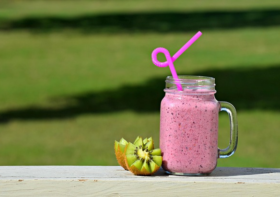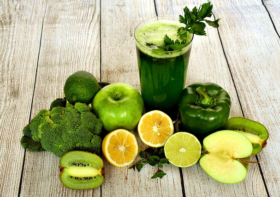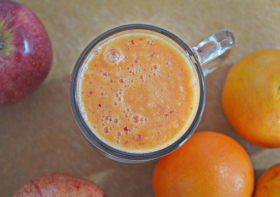Vegan weight loss shakes for effective meal replacement

- Key Takeaways
- How Vegan Shakes Work
- Decoding The Label
- Choosing Your Ideal Shake
- The Shake Beyond Weight Loss
- Potential Downsides
- Crafting Your Own Shake
- Conclusion
- Frequently Asked Questions
- Are vegan weight loss shakes effective for losing weight?
- What ingredients should I look for in a vegan shake?
- Can I use vegan shakes as meal replacements?
- Are vegan shakes safe for most people?
- Will vegan shakes provide enough protein?
- Can I make my own vegan weight loss shake at home?
- What are the possible downsides of vegan weight loss shakes?
Key Takeaways
- Vegan weight loss shakes are ideal for managing calorie intake, stimulating fullness, and supporting fat burning. These are all important elements in a healthy weight loss strategy.
- Select shakes featuring nutrient-dense, whole food ingredients and you’ll satisfy your vitamin, mineral, and protein requirements for the day while working toward your goal!
- Look for quality ingredients, fiber, natural sweeteners and you’ve got shakes that are both healthy and delicious!
- By tailoring the shakes to your taste and lifestyle, you increase the likelihood that you will maintain the routine and the results.
- Be aware of potential digestive concerns or nutritional deficiencies by complementing shakes with diverse whole foods and consulting experts as needed.
- There’s more to vegan weight loss shakes than just a slimmer waist—they can provide convenience, muscle recovery, and healthy benefits.
Vegan weight loss shakes are meal or snack beverages made with plant-based ingredients, such as nuts, fruits, and grains, to help maintain a healthy weight. A lot of folks pick them because they’re convenient, delicious and nutritious.
They usually contain fiber and protein, which will keep you satiated longer. With so many flavors and varieties, they cater to various palates and requirements.
The main part below explains how these shakes work and advice to choose the best.
How Vegan Shakes Work
That’s why vegan weight loss shakes provide a convenient and versatile option for anyone seeking to control their weight in a healthy, plant-based manner. These vegan shakes combine protein, fiber, and nutrient-dense ingredients to fuel your health while simplifying calorie control.
Digging into how vegan shakes work.
1. Calorie Control
By replacing a caloric meal with a vegan meal replacement shake, you can effectively reduce your daily energy intake while still meeting your nutritional needs. Your average vegan shake, often made of pure plant protein and organic coconut milk, typically contains 200 to 350 calories. This is a significant contrast to a fast food meal, which can easily exceed 2,000 calories.
Portion sizes and scrutinizing the label for added sugars are essential. Some vegan meal replacement products, particularly those enriched with nuts or oils, can pack more calories than expected. Since you’re using a shake as a meal or snack replacement, you maintain a calorie deficit.
As a general rule, most people find that incorporating one to three meal replacement shakes per day complements a nutritious diet.
2. Satiety Boost
Another reason vegan shakes work is fiber. Oats, flaxseeds, or chia seeds provide bulk and slow digestion, so you stay fuller longer. Combined with protein from peas, brown rice, or soy, shakes suppress hunger and help you resist in-between-meal snacking.
That tasty duo combats cravings and stabilizes your energy. Others play with flavors like cocoa and berries until they discover a mix that’s hearty and delicious. A shake after working out or for a speedy breakfast can keep you going for hours.
3. Nutrient Density
The best vegan shakes aren’t just low in calories; they’re high in vitamins and minerals. Leafy greens, berries, and seeds can transform a simple shake into a nutrient powerhouse. This balance of carbs, protein, and fat keeps you fueled through the day.
Superfoods like spirulina or hemp seeds add extra nutrients without tons of calories. Reading labels helps make sure you’re actually getting real, whole food ingredients and not filler.
4. Metabolism Support
Some shake components might actually get your body to burn more calories. Green tea powder and cayenne pepper, for instance, have a proven track record of giving metabolism a nudge up. Protein-rich shakes help your body retain muscle, which torches more calories even when you’re sitting still.
It’s about timing—some swear by a post-workout protein shake to aid in muscle repair and keep the metabolism fired up. Each body is different so what works best is your own needs and routine.
5. Blood Sugar Balance
Opt for low-glycemic ingredients like unsweetened almond milk, berries or oats to keep blood sugar steady. Including healthy fats from nuts and seeds decreases sugar absorption.
This translates into fewer highs and lows that can drive cravings later on in the day. Others employ vegan shakes as part of an insulin management strategy along with other healthy lifestyle choices.
Decoding The Label
Understanding the vegan weight loss shake label empowers you to select a shake that supports your mission. Ingredient lists, nutrition facts, and serving sizes might sound like boring basics, but every line is a story about what goes into your body. Through trusted certifications, you know the product is true-tested.
Be wary of allergens and additives like soy, gluten, or added sugar. Many shakes utilize a blend of various plant proteins or fibers, all of which have their own impact on your body and hunger. Aim for whole food ingredients and bypass anything with a long list of artificial fillers or sweeteners.
Serving size is important as well. A tiny scoop may appear virtuous but leave you starving, whereas a larger serving might have more calories than you require.
Protein Sources
|
Protein Source |
Protein (g per 30g) |
Complete Aminos? |
Notes |
|---|---|---|---|
|
Pea |
24 |
No |
Easy to digest |
|
Brown Rice |
22 |
No |
Mild taste |
|
Soy |
27 |
Yes |
Common allergen |
|
Hemp |
15 |
Nearly |
Rich in omega-3 |
|
Pumpkin Seed |
19 |
No |
Nutty flavor |
|
Mixed Plant Blend |
20-25 |
Usually |
Varies by brand |
All plant-based proteins are not created equal. For example, pea and soy provide more protein per scoop, but soy wins with its complete amino acid profile. Most brands now throw in blends.
These combine quick and slow absorbing proteins to keep you satiated longer. Look for shakes with 20 to 25 grams of protein and 100 to 120 calories per shake. Look for third-party seals on the label, which indicate the product was tested for quality and correctness.
Most vegan powders provide 3 to 4 grams of BCAAs, slightly less than animal-based alternatives but sufficient in most cases. Select powders that fit your digestion as well. Pea and rice are softer for most.
Fiber Types
Fiber steadies your digestion and keeps you full. Soluble fiber, like what you get in oats or chia, creates a gel in your gut that prevents quick digestion and helps regulate blood sugar.
Insoluble fiber, from flaxseeds or whole grains, adds bulk and helps things move along. Most shakes only use one type, but the best use both, typically sourced from psyllium husk or apple fiber.
A shake with a minimum of 5 grams of fiber can help curb hunger and avoid snacking. For homemade shakes, adding in chia or flaxseeds can increase both fiber types.
Sweetener Choices
Natural sweeteners such as monk fruit or stevia provide shakes with sweetness that contains fewer calories. Some shakes conceal added sugars or employ artificial sweeteners such as sucralose, which certain individuals shun because of potential health hazards.
Fruit purees or dates are great for a little sweetness without the excess sugar, and they add fiber and nutrients. Despite the delicious sounding names, check the ‘added sugar’ line of the label because even a small amount of added sugar adds up and can stall weight loss.
Go for shakes with fewer than 5 grams of sugar per serving for the best results.
Micronutrient Profile
|
Shake Type |
Key Micronutrients |
Benefit |
|---|---|---|
|
Soy-based |
Calcium, Iron, B12 |
Bone health, energy, metabolism |
|
Pea-based |
Vitamin K, Magnesium |
Blood clotting, muscle function |
|
Mixed Plant Blend |
Vitamin D, Zinc, Selenium |
Immunity, thyroid, mood |
|
Hemp-based |
Omega-3, Vitamin E |
Heart health, skin protection |
A shake’s micronutrient content can plug gaps in a vegan diet. Opt for added B12, iron, and vitamin D, which are common deficiencies.
A healthy combo fuels weight loss by keeping your body humming and your cravings in check! Shakes with a broad micronutrient range will keep you healthy as you drop pounds. Beware of those with just a few vitamins thrown in.
Choosing Your Ideal Shake
Selecting your perfect shake means understanding what you want from it and how it integrates into your lifestyle. Not every shake will work for you, and there’s a lot to consider before choosing one. A simple checklist can help: look at your goals, your lifestyle, your taste buds, and any dietary needs you have.
Ensure the shake meets your nutritional requirements, corresponds to your activity level, and complements your overall meal plan. Know what to look for: Always check the label for calories, protein, fiber, and vitamins. Consider the protein type. Whey is not vegan, so pea or a blend of plant proteins are wise choices.
Some are fortified with vitamins and minerals, which is great if you’re skipping meals or want a full meal replacement. A shake you don’t love won’t help if you don’t drink it. Keep your personal requirements at the forefront.
Your Goal
Begin by becoming clear on your weight loss goal. If you know you want to lose fat, a lower calorie shake, somewhere in the 150 to 250 range, can help you reduce without sacrificing nutrition. For muscle building, lean towards shakes with a minimum of 15 to 20 grams of protein.
Some shakes are delicious post-workout boosts, while others are better as meal replacements, especially those closer to 400 calories with higher protein. Always combine your shake with other healthy foods to complete your meal plan. If you have a diet, such as gluten-free or soy-free, check the label again.
Your Lifestyle
Life is fast and your shake should be too. If you’re always out and about, bottled shakes or single-serve packs are super easy to snag and get moving. For meal prep aficionados, blending up a large batch of shakes in advance can make eating healthy easier.
Activity level counts as well. If you’re a runner or someone who works out a lot, then you might require a shake with more protein and calories to get you through. Shakes can serve as a grab-and-go breakfast before work, an afternoon pick-me-up, or an extra push after a workout.
Others use shakes as an afternoon energy booster or to bridge meals. Convenience is important; if a shake is a pain to make, you won’t do it.
Your Palate
Taste is subjective. If a shake tastes boring or the consistency is weird, it’s not going to be habit forming. Experiment with various flavors, such as vanilla, chocolate, or berry. Blend in berries, spinach, or peanut butter for extra flavor!
A few people enjoy the flavor of natural sweeteners; some are okay with synthetic ones. If you want to mix things up, add spices like cinnamon or ginger, or blend in oats for a heartier shake. Play around with it until you find your personal favorite.
The right shake for you can make healthy eating seem less like drudgery.
The Shake Beyond Weight Loss

Vegan weight loss shakes aren’t just good for dropping pounds; they can also be a great option for using vegan meal replacement shakes to boost your general health and plug into various aspects of your lifestyle. For most, these shakes serve as a convenient method to obtain essential nutrients, particularly with a busy lifestyle.
A great vegan meal replacement shake can combine plant-based protein, healthy fats, and carbs. This blend energizes and suppresses your appetite, so you’re not inclined to snack on high sugar or salt foods. Plenty of shakes are fortifying with added vitamins and minerals, which help fill any holes left by hectic schedules or constrained dinner selections.
Shakes can serve in the afternoon or after long meetings as a smart snack replacement. They’re quick to prepare and convenient to bring on the road. A shake with oats, frozen berries and pea protein powder, for instance, provides a satiating snack with fiber and slow-release carbs. This maintains blood sugar and keeps you sharp.
However, while meal replacement shakes can be beneficial, they shouldn’t replace whole foods at every meal. Whole grains, fresh fruits, and vegetables still have a place in a balanced diet.
For exercisers, using vegan meal replacements as post-workout options is logical. Plant-based protein, such as pea or rice protein, promotes muscle recovery and growth. Nothing like a shake with almond milk, banana, and a scoop of protein powder to help rebuild muscle and replace lost energy.
Once you add greens or a spoon of flaxseed, the shake is pumped with more power. Shakes aren’t magic, but they can be a helpful addition to a recovery regimen. It’s wise to keep an eye on the ingredients; some shakes include artificial sweeteners or flavoring, which may have unknown long-term impacts.
Studies indicate certain artificial sweeteners might increase appetite in animals, but we require additional studies in humans. What I love most about recovery shakes is that they’re versatile. You can use them as a meal replacement for a short duration, typically up to three months, if you’re looking for an easy way to shed pounds.
However, meal replacement shakes are not a long-term solution. They work best with a nutritious blend of real foods. Too many shakes, or topping off full meals with them, will lead to weight gain.
The Shake Beyond Weight Loss Look for shakes with a nice balance of protein, carbs, fats, and added vitamins, and stick to them as one component of your daily regimen.
Potential Downsides
Vegan weight loss shakes, particularly healthy vegan meal replacement shakes, have become a staple for those looking to shed pounds while keeping it plant-based. However, there are legitimate drawbacks to ponder before committing to using vegan meal replacement shakes in your weekly schedule, as they aren’t always a miracle cure and may come with potential downsides.
Digestive Issues
Some folks find vegan weight loss shakes tough on their stomach! Since lots of shakes utilize plant-based proteins like pea or soy and quite a bit of fiber, bloating or even a heavy, gassy feeling can arise. This holds particularly true if you’re new to high-fiber foods or abruptly switch to shakes as a heavy part of your meals.
Tinkering your shakes can help. Experiment with gentler ingredients, such as oat or rice protein, and mix in ripe fruit in place of raw greens when you’re feeling tender. Ease up on the fiber-heavy add-ins until your body adjusts.
If you find yourself constantly feeling bad, consult a dietitian or nutritionist to exclude something more severe. For some individuals, incorporating probiotics or a digestive enzyme supplement can assist. These do make shakes easier to digest, particularly if you’re a stomach upset magnet.
Nutrient Gaps
Depending exclusively on vegan shakes to fill meals will leave nutritional holes in your diet. Shakes, while convenient, may not provide you with all the various vitamins and minerals your body requires, particularly those found in animal foods. Protein is a concern, but so are vitamin B12, iron, calcium, and lysine.
A lot of vegan shakes don’t provide enough of these, so you could begin feeling fatigued, frail, or just not quite your best. It can be helpful to combine whole plant foods with shakes. Fill in the gaps with beans, nuts, seeds, leafy greens, and grains.
Watch what you’re eating so you don’t drop a crucial piece. Most vegans have to take supplements like B12 or lysine to hit all the bases. A smart approach is to use shakes as a tool, not the entire strategy.
Dependency Risk
It’s too simple to slip into the habit of relying on shakes as your primary nutrition. They’re fast, they’re convenient, and they’re simple to calorie count with. Over time, this can cause you to become too dependent on processed foods, which isn’t ideal for long-term health or gratification.
That danger escalates if you’re so busy you miss real meals, or if prepping fresh vegan fare is too much hassle. A smarter approach is to establish guidelines for when to use shakes and to ensure you’re eating whole foods as well.
Save shakes for crazy days or after-workout snacks, not every eating occasion. Mindful eating, such as noticing hunger and satiety signals, can keep you in tune with your body’s requirements. This reduces the chances you’ll fall into a meal replacement rut.
Crafting Your Own Shake

Making your own vegan weight loss shake puts YOU in control of what goes in the glass. Customize the flavor, consistency, and vitamins to what your body requires and your palate prefers. Whole foods are critical, providing more fiber, vitamins, and minerals than processed powders.
A handful of spinach or kale can transform an ordinary banana shake into a green powerhouse, while frozen pineapple or mango can add a tropical flavor and vitamin C boost.
Now, some people like their shakes thick and frothy. Mix in a splash of coconut milk, maybe 60 ml, with a scoop of shredded coconut—lush and almost like a dessert, yet totally weight loss-friendly. If it’s too thick, add additional plant milk, up to 120 ml, until it’s just right.
Chia seeds are a thickening favorite, but keep in mind they absorb liquid and will transform a shake into pudding if it sits for a bit. For a thinner shake, reduce the chia or drink immediately after blending.
Testing out new combos keeps things fresh. For a fast shake, blend silken tofu, almond or cashew milk, banana, oats, and a drop of vanilla. A spoon of honey or maple syrup, if that’s your thing, seals the deal.
Throw in a cup of greens or substitute frozen berries for banana to mix up the flavor and increase the nutrition. We’ve made some shakes in five minutes, which comes in handy when you’re in a pinch or need a post-workout snack.
Jotting down favorite combos saves hassle later. Having a list of go-to shakes on the fridge means that you don’t have to sweat it when you’re hungry. Mix mango with coconut milk and spinach, or combine oats, peanut butter and banana for a shake that will keep you full.
Fine tune the quantity of oats or plant milk to achieve the balance in your routine. Use more oats for added fiber and use more milk for an easier sip.
Tinkering with component quantities is half the fun of making shakes work. If you desire extra protein, toss in tofu, seeds, or vegan protein powder. For fiber, add oats or flaxseed.
Taste as you go, and don’t be scared to switch things up. Blend for a full minute to get a velvety, consistent texture each time.
Conclusion
Weight loss shakes vegan can fit into a lot of lives. They provide a convenient means to consume nutrients like protein, fiber, and essential vitamins. Others replace a meal with a shake for convenience or to assist in calorie tracking. Some use them post-workout to power back up. Selecting the ideal shake requires some label reading, but it becomes easier with experience. Not every shake fits every objective, so experiment until you find what clicks. Folks everywhere experiment with new combinations, perhaps oats, nuts, or berries. Give a few concepts a whirl, discover what goes, then pass your preferred blend onto a pal or two. Health journeys thrive in community.
Frequently Asked Questions
Are vegan weight loss shakes effective for losing weight?
Well, yes, using vegan meal replacement shakes can help you lose weight by supplying you with contained calories and balanced nutrition. They work best in conjunction with a proper diet and exercise.
What ingredients should I look for in a vegan shake?
Seek out plant-based proteins, such as organic pea protein and brown rice protein, along with natural sweeteners, fiber, vitamins, and minerals. When using vegan meal replacement shakes, look for whole food ingredients like oats and seeds while avoiding artificial ingredients or extra sugar.
Can I use vegan shakes as meal replacements?
Most vegan meal replacement shakes serve as meal replacements, so look for balanced protein, carbs, fat, and micronutrients to meet your daily nutritional needs.
Are vegan shakes safe for most people?
Vegan meal replacement shakes are safe for healthy adults; however, those with food allergies or medical conditions should consult a health care professional before using vegan meal replacements.
Will vegan shakes provide enough protein?
Most vegan meal replacement shakes utilize pea, soy, or rice protein, providing sufficient calories and quality nutrition for the majority of adults. Always read the label to ensure it aligns with your protein targets, typically around 20 grams per serving.
Can I make my own vegan weight loss shake at home?
Sure, you can mix up your own vegan meal replacement shakes with plant-based proteins, fruits, veggies, and good fats. This allows you to manage ingredients and customize the shake to your taste and nutritional needs.
What are the possible downsides of vegan weight loss shakes?
Some vegan meal replacement shakes are missing key nutrients or contain added sugar and fillers, leading to nutritional imbalances. Never rely solely on meal replacement shakes.



Leave a Reply